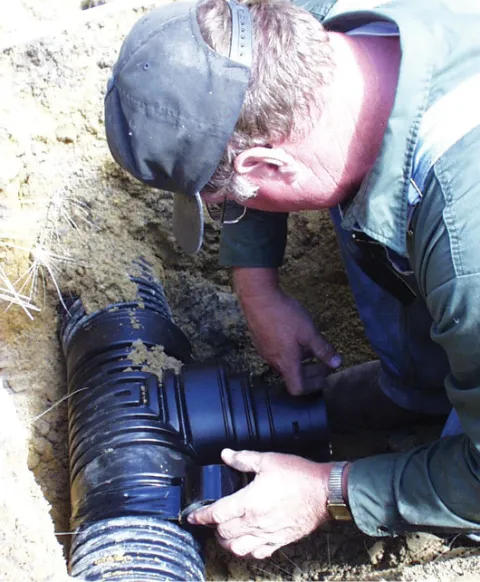Tile drainage impacts on downstream flow and flooding have been the subject of much debate for more than a century. The influence of tile drainage on stream flow involves complex processes that depend on many factors. Therefore, generalizations such as tile drainage “causes” flooding or tile drainage “prevents” flooding oversimplify the issue.
Drainage pump station discharge mixes with surface runoff.
Some of the important factors that will determine the impact of tile drainage on downstream flow and flooding include soil types, rainfall (or snowmelt) amount and intensity, point of interest (near the field outlet or over a larger watershed), time frame of interest, existing soil moisture conditions, and the extent of surface drainage (including surface intakes) and channel improvements.
Despite this complexity, the research on tile drainage and stream flow contain some areas of general agreement. For the poorly drained, low-permeability soils where tile drainage typically is used in the upper Midwest, tile drainage will lower the water table, which increases soil water storage capacity and infiltration. This reduces the amount of surface runoff and the peak flows coming from the field.
For small or moderate rain or snowmelt events, this may help reduce downstream peak flows that are often a concern for flooding. Discharge from tile drainage occurs during a longer time period than surface runoff, however, base flows (stream flows between storm or snowmelt events) tend to increase from tile drainage.
For large rain or snowmelt events or extended rain events on wet soils that exceed the infiltration ability of the soil – which typically are related to catastrophic flooding-stream flows are driven by surface runoff, and tile drainage has minimal impact on downstream flows and flooding.
Because of the many factors and complexity involved, computer models are used to help understand how drainage impacts hydrology. Studies based on computer modeling suggest that the water yield (surface runoff plus tile and shallow groundwater flow) with tile drainage will be similar to the water yield without drainage.
Some studies have shown some increase (on the order of 10 percent1) in overall water yield from tile drainage, while others have shown no change or even a decrease. These studies, however, have not been verified with field data.
Moving beyond the field scale to larger watershed scales, the complexity increases greatly with more variation in all of the factors contributing to stream flow, and thus, isolating the impacts of tile drainage at these scales becomes much more difficult. Therefore, the influence of tile drainage on stream flow and flooding at these larger scales is not yet well-understood.
NDSU tile drainage research plots. Note the water level control boxes.






